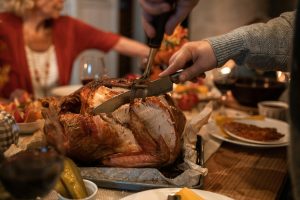Food, coffee, wine, weed — we often talk about these as indulgences, treats, or vices. But for many of us, they’re more than that. They’re survival tools for feelings we never learned to hold.
Maybe you crave something sweet late at night when the house goes quiet. Or you can’t get through the afternoon without coffee to push through your exhaustion. Or you pour a glass of wine not just to unwind, but to soften a hard edge inside.
If you grew up with your emotions unseen, these cravings aren’t about willpower. They’re about filling an emptiness you were left to face alone
If you find yourself stuck in cycles of craving, soothing, guilt — you’re not broken.
You’re coping. And you can learn to cope differently.
The Snack Isn’t Just a Snack: Why Cravings Run Deeper
You’re not really hungry — but you’re standing in front of the fridge again. You tell yourself it’s just a treat. Or a reward. Or something to do while you unwind.
The wine at night, the sugar when you’re sad, the coffee when you feel like you can’t keep going — these cravings don’t come from nowhere. They come from a nervous system that learned to reach outside itself for relief.
For many, this is the most familiar way to self-soothe: to put something in the body when you can’t bear what’s in your heart. You’re not craving just taste. You’re craving comfort. Softness. A moment when you can feel cared for — even if it’s just for a few minutes.
What’s Happening in the Brain: Dopamine 101
You’ve probably heard of dopamine — people call it the “pleasure chemical.” But that’s not quite right.
Dopamine isn’t about the pleasure itself — it’s about the chase. It’s the brain’s way of saying, “Ooh, something good is coming — go get it!” That little spark of motivation is why you feel the pull toward the cookie jar, the coffee pot, or the wine glass before you even take a sip or bite.
Here’s the kicker: dopamine doesn’t flow because you got the snack — it flows because you anticipate relief. That moment right before you pour the wine or open the cupboard? That’s the hit. Your brain lights up because it expects a reward: sweetness, warmth, sedation, or a burst of energy.
It’s not weakness — it’s your brain’s way of trying to buffer discomfort. Sugar and fat boost dopamine. So does alcohol. Even caffeine does it — but with the twist of revving you up when you feel too tired to feel.
This is how the cycle forms:
An unmet emotional need → a physical input → momentary relief → return of emptiness → repeat.
When your childhood taught you that your feelings were “too much” — food and substances step in as feelings you can manage.
CEN and the Void That Feels Like Hunger: When Needs Go Unmet
Childhood emotional neglect (CEN) doesn’t leave bruises. It leaves blank spaces — places where comfort, co-regulation, or gentle presence should have been.
Studies show that childhood trauma and emotional neglect are linked to both emotional eating (van Strien, 2015) and increased susceptibility to addiction-like behaviors, even without traditional trauma markers like physical abuse or neglect (Anda et al., 2006; Schore, 2003).
If your sadness was ignored, you may have learned to feed it sugar. If your overwhelm was shamed, you may have learned to pour it a drink. If you never felt truly safe to rest, coffee became the only way to keep going.
Food, drink, and other substances become the stand-ins for presence, for soothing, for relief. So when you keep finding yourself back at the fridge, or topping up your mug again — it’s not about greed or indulgence. It’s about trying to fill the void that wasn’t filled when you needed it most.
Patterns of Emotional Feeding: How Coping Becomes Habit
Like screens, food and substances can turn into an emotional management system — running in the background, quietly propping up your nervous system. You might notice patterns like:
- Grazing late at night, when the house is quiet but your mind is loud
- Using snacks or substances as rewards for surviving stress
- Depending on coffee to push through exhaustion you never permit yourself to feel
- Pouring a glass (or another) when feelings you’d rather not face arise
- Feeling guilt and shame after — but returning to it again, because the alternative is emptiness
It’s not your fault. It’s your body doing what it knows to do.
Is This You? A Gentle Self-Check
Pause for a breath. No blame — just noticing.
Do you crave sugar, snacks, or drinks most when you feel alone or overwhelmed? Do you eat or drink not out of hunger, but to soften a feeling? Do you get anxious if you try to cut back? Do you promise yourself you’ll “be good tomorrow,” but find comfort wins every time? Do you feel guilt or shame afterward, but are not sure what to do instead?
If yes, you’re not failing. Your nervous system is telling you something: This was your comfort when you had none.
Why Cutting Back Doesn’t Heal the Hunger: The Trap of Restriction
When you realize you’re eating too much sugar, or drinking too often, or can’t get through the day without coffee, the instinct is usually restriction.
You tell yourself: No more snacks. No more wine. No more comfort. But here’s the trap: if the craving is covering an emotional void, removing it leaves the void exposed — with nothing to soothe it.
You can’t punish away a need that was never met. You can’t restrict yourself into feeling safe. This is why diets fail. Why detoxes fail. Why “good days” so often lead to binges.
Because underneath the craving is not just a habit, but a brilliant adaptation your younger self created to survive emotional lack.
You don’t heal by shaming the craving. You heal by hearing it — and tending to the need it’s protecting.
What to Do Instead: Practices for Real Nourishment
The goal isn’t to force yourself to give up comfort — but to learn how to offer it more directly, gently, and sustainably.
Sensory Soothing: Comfort That Actually Comforts
Brew a warm herbal tea that feels nurturing — drink it slowly, with full presence. Make or eat food without screens — notice texture, warmth, taste. Wrap yourself in softness — socks, blankets, cozy clothes. Use self-touch — warm your hands on your belly, or rest a hand over your heart.
Emotional Reconnection: Listening Beneath the Craving
Journal when a craving comes up: What am I feeling right now? What do I truly need?
Try “urge surfing” — notice the impulse without obeying it immediately.
Light a candle when you feel the pull. Ask yourself, What is this part of me asking for? Practice a tiny moment of safe stillness — close your eyes for one gentle breath before you reach for the snack or drink.
Internal Family Systems: Talking with Your Inner Team
Internal Family Systems (IFS) is a therapeutic approach that helps us understand the different “parts” of ourselves. Think of it like having an inner team around a table. One part wants the cookie, another part feels guilty after, and another just wants comfort and relief. Instead of silencing or shaming these voices, IFS teaches us to listen to them with curiosity and compassion. Each part is just trying to help — even if its strategy (like overeating or overdrinking) isn’t the healthiest one.
Sit with the part of you that wants the snack or glass. Ask: What are you afraid I’ll feel if I don’t have this? Thank it for trying to help you cope.
Offer another option: What else could help us feel softer right now? You’re not giving up softness — you’re creating a more lasting source of it, inside you.
Download Your Free Guide
Craving Something: A Self-Exploration Guide for Food, Substances, and CEN
Your free printable companion helps you unpack the patterns behind emotional hunger — with no shame, just insight.
Inside you’ll find:
- The gentle self-check from this article
- A clear map: what your cravings may be trying to soothe
- Healthy sensory and emotional alternatives
- Journal prompts to explore the roots of your patterns
- An IFS practice to meet your craving parts with compassion
Download it for free at: https://www.fromcentowholeness.com/wp-content/uploads/2025/07/dopamine-cen-3-cravings.pdf
About the Author: Mina Todorova is a trauma-informed writer and educator who explores the silent impact of Childhood Emotional Neglect (CEN), triggers, gentle parenting, and seasonal living. She helps readers reconnect with their true needs through neuroscience-rooted insight, large journaling prompts, IFS practices—and almost every article includes a free resource. Learn more at fromcentowholeness.com.
References
- van Strien, T. (2015). Causes of emotional eating and matched treatment of obesity. Current Diabetes Reports, 14(10), 505.
- Anda, R. F., et al. (2006). The enduring effects of abuse and related adverse experiences in childhood. European Archives of Psychiatry and Clinical Neuroscience, 256(3), 174–186.
- Schore, A. N. (2003). Affect Dysregulation and Disorders of the Self. Norton & Company.
Photo by Tima Miroshnichenko: https://www.pexels.com/photo/girl-playing-computer-video-game-while-eating-pizza-7047299/
The opinions and views expressed in any guest blog post do not necessarily reflect those of www.rtor.org or its sponsor, Laurel House, Inc. The author and www.rtor.org have no affiliations with any products or services mentioned in the article or linked to therein. Guest Authors may have affiliations to products mentioned or linked to in their author bios.
Recommended for You
- How to Stop Nail Biting: What Finally Worked for Me After Years of Failed Attempts - December 26, 2025
- Dealing With Toxic Family Members: A Survival Guide for Family Gatherings - December 22, 2025
- When to Seek Help from a Child Psychiatrist: 6 Signs Your Child Needs Support - December 19, 2025





